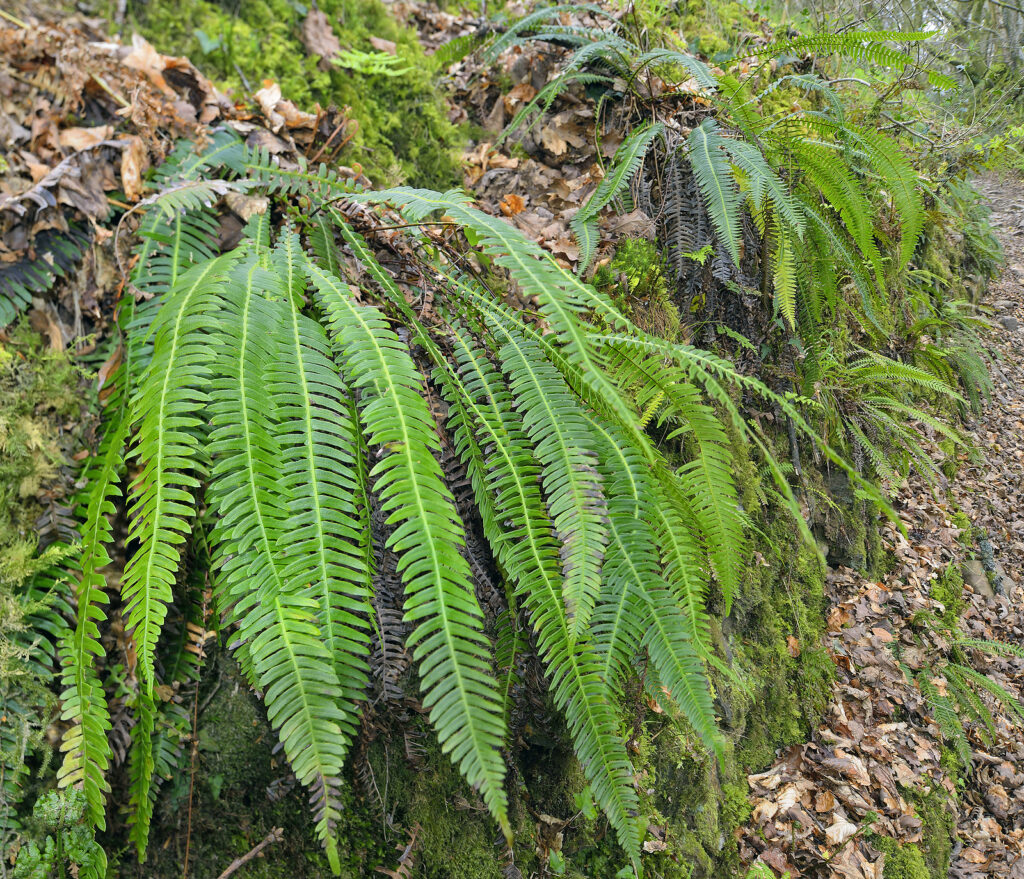Blechnum is a woodland fern with leathery, usually once-pinnate or deeply lobed, ladder-like fronds. Blechnum is sometimes known as hard fern or deer fern.
Blechnum is a genus of 150 to 200 species of usually evergreen, rhizomatous, terrestrial ferns found mostly in moist, sheltered, acidic soils in temperate or tropical regions.
Grow Blechnum in a shady border or woodland garden. Blechnum can be grown indoors in regions where it is not hardy.
Get to know Blechnum
- Plant Type: Fern
- Growing Zones And Range: Zones 8-11
- Hardiness: Hardy to Zone 8
- Height And Width: 9 inches (22cm) to 6 feet (1.8m) tall and 9 inches to 3 feet (1m) wide depending on the variety
- Foliage: Pinnate usually leathery fronds
- Uses: Grow in woodland, in shady herbaceous border, or in rock garden
- Common Name: Hard fern, deer fern
- Botanical Name: Blechnum
- Family Name: Blechnaceae
- Origin: Temperate and tropical regions worldwide

Where to plant Blechnum
- Light outdoors: Grow Blechnum in deep shade outdoors.
- Soil outdoors: Grow in moist, humus-rich, acidic soil.
- Light indoors: Provide bright filtered or indirect light.
- Soil indoors: Grow Blechnum indoors in a mix of 1 part each acidic loam, medium-grade bark, and charcoal; 2 parts sharp sand; and 3 parts coarse leaf mold.
- Where not hardy, grow Blechnum in a greenhouse or conservatory.
When to plant Blechnum
- Set Blechnum outdoors after all danger of frost is past.
Planting and spacing Blechnum
- Space Blechnum 9 inches to 3 feet (1m) apart depending on the variety.
How to water and feed Blechnum
- Water Blechnum freely to keep the soil evenly moist during the growth period; water moderately in winter.
- Fertilize Blechnum with an organic fertilizer formulated for ferns.
Blechnum care
- Frond discolor if air circulation is poor, and in a dry atmosphere.
- Blechnum fronds may scorch in full sun.
Growing Blechnum as a houseplant
- Grow Blechnum indoors in a mix of 1 part each acidic loam, medium-grade bark, and charcoal; 2 parts sharp sand; and 3 parts coarse leaf mold.
- Provide bright filtered light indoor and moderate to high humidity and good ventilation.
Blechnum pests and diseases
- Blechum is prone to leaf spot and rust.
- Scaled insects, mealybugs, and caterpillar can be a problem.
Blechnum propagation
- Sow spores in late summer.
- Divide in spring; divisions can take time to re-establish.
Blechnum varieties to grow
- Blechnum alpinum, see B. penna–marina.
- B. appendiculatum. Slightly arching; lance-shaped pinnate dark green fronds; grows to 15 inches tall; Zone 10-11.
- B. australe. Slightly arching fern; linnear pinnate midgreen fronds; grows to 15 inches tall; Zones 10-11.
- B. brasiliense. Evergreen, upright, trunk-like rhizones; oblong-lance-shaped pinnate mid to dark green fronds; grows 3 to 5 feet; Zone 11.
- B. chilense. Evergreen, creeping rhizomes; ovate to lance-shaped pinnate, dark green fronds; grows 3 to 6 feet; Zone 10-11.
- B. gibbum. Evergreen with upright trunk-like rhizome; black-scaled, bright green fronds grows to 3 feet tall and wide; Zones 12-15.
- B, nudum. Evergreen, ovate-lance-shaped fronds; grows to 3 feet tall and wide; Zones 8-10.
- B. occidentale, hammock fern. Evergreen with erect or ascending rhizomes; lance-shaped, mid-green fronds, grows 9 to 18 inches tall and wide; Zones 9-11.
- B. penna-marina, syn. B. alpinum. Evergren with linear, pinnate fronds, grow 4 to 8 inches tall and wide; Zones 10-15.
- B. spicant, deer fern. Evergrene with creeping rhizoes; narrow lance-shaped , pinnate, dark green fronds; grows 8 to 10 inches tall and 24 inches wide; cultivars include ‘Crispum’, ‘Cristatum’, and ‘Richard’s Serrate’; Zones 10-11.
- B. wattsii. Arching, braodly ovate pinnate dark green blades with bronzy red new growth; grows to 12 inches tall; Zones 9-11.



